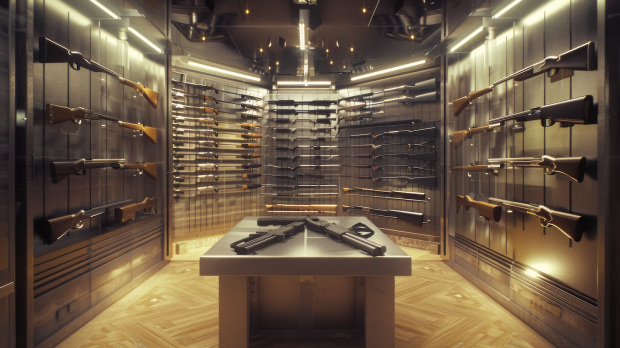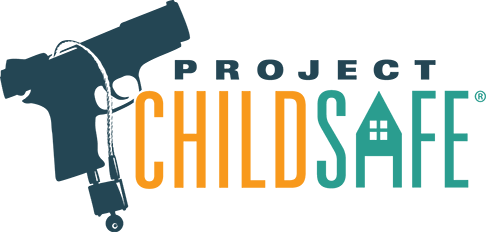Search
Cart
There are no items in your cart.
Login
Shotgun vs. Rifle vs. Handgun for Home Defense: The Trade-Offs That Matter

There’s a question as old as modern firearms themselves—what’s the best choice for home defense? The debate rages on in gun shops, internet forums, and among seasoned professionals, often boiling down to three main contenders: the shotgun, the rifle, and the handgun. Each brings strengths, limitations, and surprising nuances that make them worth considering.
Of course, many gun owners joke that they keep a handgun on their nightstand—not as their primary home defense weapon, but to fight their way to their shotgun or rifle. And when it comes to stopping power, there's another old joke: When an intruder has been shot with a handgun, the police usually ask, "Where did he go?" But when the same intruder has been shot with a shotgun/rifle, the question is more likely to be, "Where is the body?"
While humorous, these quips highlight an important reality—different firearms bring different advantages, and their effectiveness in home defense depends on far more than just raw firepower. The best home defense firearm isn’t simply a matter of ballistics—it’s about what you can use effectively under stress, in your specific environment, with confidence.
Shotgun: The Proven Home Defense Powerhouse
Few firearms are as iconic for home defense as the shotgun. The idea that a 12-gauge, loaded with buckshot, will stop an intruder with a single trigger pull is deeply ingrained in popular culture. There’s some truth to it—few firearms deliver as much sheer stopping power at close range. A load of 00 buck can produce a devastating spread, increasing hit probability in a high-stress scenario. And, contrary to some criticisms, shotguns are relatively simple to operate. As long as the user can manage recoil, they offer a straightforward manual of arms—point, shoot, repeat.
Shotguns offer versatility in ammunition, with options ranging from birdshot to buckshot to slugs—each with distinct advantages and drawbacks. Buckshot provides an optimal balance of stopping power while minimizing the risk of excessive penetration associated with slugs. This makes it an excellent choice for home defense, where stopping an intruder quickly is paramount, but avoiding unnecessary risk to bystanders is equally critical.
Tactical shotguns, particularly semi-automatic models, allow for faster follow-up shots and reduced recoil, making them easier to manage under stress. Bullpup shotguns, with their compact design, enhance maneuverability in confined spaces without sacrificing firepower. While slugs deliver immense force and extended range, they may be excessive for home defense, as they carry a higher risk of overpenetration. Buckshot, by contrast, offers a more balanced solution—capable of stopping a threat effectively while reducing the likelihood of unintended damage beyond the target.
That said, shotguns are not without trade-offs. They require training to handle efficiently, particularly in working the action of a pump shotgun under stress. While their manual of arms is straightforward, reloading under pressure is slower compared to a rifle or handgun. Additionally, their capacity is typically limited—most home-defense shotguns hold between 5 to 8 rounds, which is less than a rifle but generally sufficient for most home defense situations. With proper training, a well-loaded shotgun remains one of the most formidable tools available for home defense.
Rifle: Effective but Requires Commitment
Rifles—especially AR-15-style carbines—have increasingly gained traction as home defense tools. This shift isn’t without reason. A lightweight rifle chambered in .223/5.56 is incredibly easy to shoot, recoils minimally, and offers superior accuracy under stress. Magazine capacity far surpasses shotguns and handguns, often allowing for 30 rounds before needing a reload. With proper defensive ammunition, overpenetration (a common concern) is far less of an issue than many assume. Defensive .223 rounds are designed to fragment upon impact, reducing the risk of passing through multiple walls compared to handgun or shotgun slugs.
One notable alternative in the rifle category is the AR/AK pistol. These firearms retain the maneuverability of a traditional pistol while offering the increased firepower of a rifle-caliber round. When equipped with a stabilizing brace, they provide an excellent balance between compactness and capability, making them viable for home defense. Their shorter barrel lengths make them easier to maneuver in confined spaces, though they still require training for effective use.
However, rifles also have drawbacks in a home setting. Their length can make them more cumbersome in tight quarters, requiring additional training to maneuver effectively. AR pistols and SBRs (short-barreled rifles) mitigate this issue somewhat, but still demand a higher level of familiarity than a shotgun or handgun. Additionally, rifles produce extreme noise indoors, which can cause permanent hearing damage—especially if fired without hearing protection. Suppressors can significantly mitigate this, but they are subject to National Firearms Act (NFA) regulations, making them less accessible for many homeowners.
While modern rifle-caliber rounds designed for home defense reduce wall penetration risks compared to traditional FMJ rounds, they still require careful ammunition selection. Compared to handguns, both rifles and shotguns offer superior stopping power, making them strong choices for home defense—provided the user is committed to proper training.
Handgun: The Most Practical, Yet the Most Demanding
The handgun is often dismissed as a secondary choice, a mere fallback for those who don’t have access to a long gun. And yet, it remains the most practical for many home defenders. Its greatest advantage? Maneuverability. A pistol can be used one-handed, freeing the other hand to open doors, grab a phone, or control family members. It’s far easier to keep on hand (or in a bedside safe), making it the fastest firearm to deploy in most realistic scenarios.
But handguns have serious limitations. They are significantly harder to shoot well under stress compared to rifles or shotguns. Their ballistics are inherently weaker, and while they typically hold more rounds than a shotgun, they still fall far behind rifles in capacity. Unlike a shotgun, which benefits from a spread pattern, or a rifle, which offers superior stability, a handgun requires more effort to achieve effective hits. Furthermore, handgun ammunition is significantly weaker than rifle and shotgun rounds in terms of stopping power, making accuracy and shot placement even more critical.
However, when wielded by a trained shooter, a handgun is far from a weak option. Law enforcement officers and military personnel train extensively with handguns because they offer unmatched versatility in confined spaces. The ability to engage a threat effectively while using cover, moving dynamically, or operating in tight quarters makes a handgun a highly effective tool for those who are proficient.
Despite being the most common firearm for concealed carry, handguns require the most training to be effective in a high-stress home defense scenario. Factors such as grip, trigger control, and sight alignment become critical, and without regular practice, accuracy suffers. However, for those who dedicate time to training, a handgun is more than capable of stopping a threat quickly and decisively.
At the end of the day, a handgun’s biggest strength is its practicality—it is the firearm most likely to be within reach when a home invasion occurs. A handgun in trained hands is a formidable defensive tool, offering the speed, accessibility, and maneuverability needed to protect one’s home.
So, Which One? The Answer That No One Likes
No single firearm is universally “best” for home defense. The shotgun, with its stopping power, requires proficiency and discipline but remains one of the simplest and most effective tools available. The rifle, with its accuracy and capacity, demands maneuvering skill and a greater training commitment, but AR/AK pistols offer a compact and capable alternative. The handgun, while convenient, is the hardest to master in high-stakes situations but remains the most practical for immediate accessibility.
The real answer? Training matters more than the weapon itself. An untrained person with a shotgun is at a disadvantage compared to a well-trained individual with a handgun. Likewise, someone who drills with their AR-15 in a home setting will outperform a shotgun user who has not trained sufficiently, as proficiency is key to effective home defense.
Choosing a home defense firearm isn’t just about ballistics or stopping power—it’s about what you can use effectively in your environment, under stress, with confidence. In the end, the best home defense gun is the one you train with, understand fully, and can wield with precision when it matters most.
.
By Edward Meyman, CEO of Kind Sniper
NEWSLETTER










Leave a Comment